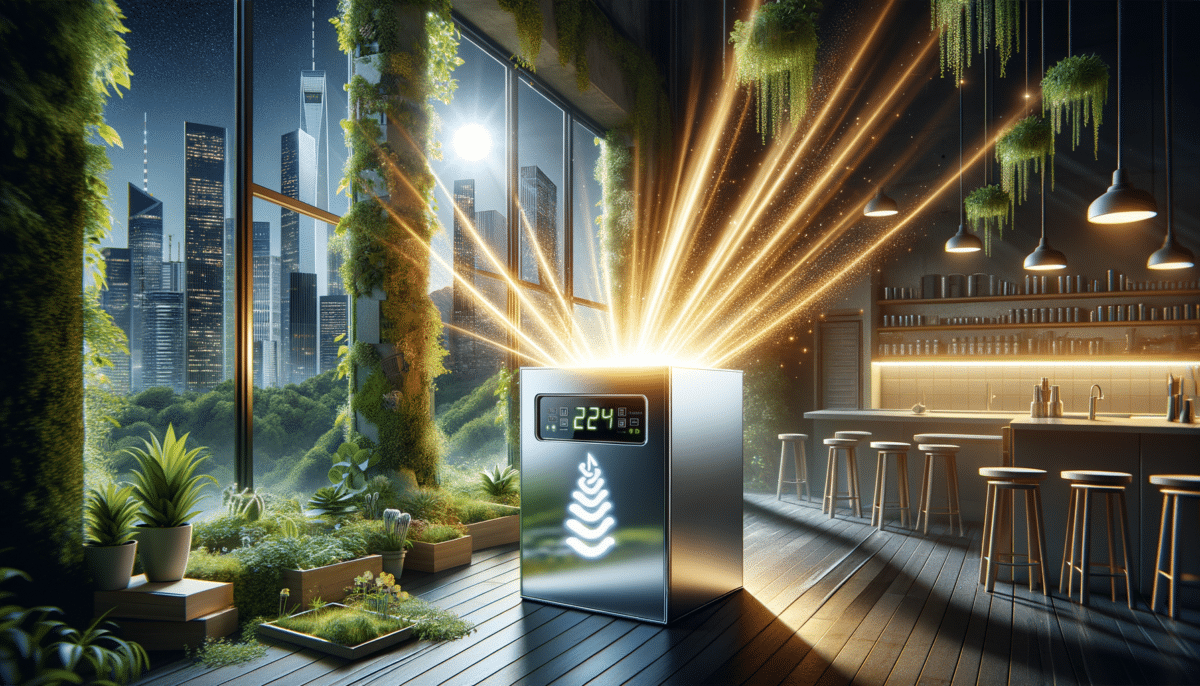Understanding Energy Saving Boxes: An Overview
Energy saving boxes are devices designed to optimize the electricity usage in your home or office. These devices are becoming increasingly popular as energy costs rise and the demand for sustainable living grows. The primary function of an energy saving box is to stabilize voltage, balance the current, and reduce the reactive power in your electrical system. By doing so, it aims to decrease the amount of electricity wasted, leading to lower utility bills.
Typically, these boxes are plugged into a power outlet and work by filtering the electrical system, reducing the amount of energy that is lost through heat and other inefficiencies. They can be particularly beneficial in environments with high power consumption, where even a small percentage of savings can lead to significant cost reductions over time.
Energy saving boxes are not just about saving money; they also contribute to environmental conservation. By reducing energy waste, they help lower the carbon footprint of a household or business, aligning with global efforts towards sustainability.
How Energy Saving Boxes Work
The technology behind energy saving boxes is based on power factor correction. Power factor is a measure of how effectively your electrical power is being used. A low power factor indicates that you’re drawing more power than necessary, which translates into higher electricity bills.
Energy saving boxes improve the power factor by storing electricity and releasing it when needed, thus reducing the amount of power drawn from the grid. This process helps in smoothing out the peaks and troughs of electricity usage, ensuring a more consistent and efficient energy flow.
Furthermore, these devices often incorporate surge protection features, which safeguard appliances from voltage spikes. This not only extends the lifespan of your devices but also prevents potential damages that could result in costly repairs or replacements.
In summary, energy saving boxes optimize electrical consumption through power factor correction and voltage stabilization, making them a valuable addition to any energy-conscious household or business.
Benefits of Using Energy Saving Boxes
One of the most immediate benefits of using an energy saving box is the reduction in electricity bills. By improving the efficiency of your electrical system, these devices can lead to noticeable savings over time. For businesses, this can translate into significant cost reductions, allowing for reinvestment in other areas.
Another advantage is the protection of electrical appliances. Energy saving boxes can prevent damage from power surges and fluctuations, which are common causes of appliance failure. This added protection can extend the lifespan of your devices, reducing the need for frequent replacements.
Moreover, using an energy saving box contributes to environmental sustainability. By reducing energy consumption, you are indirectly lowering carbon emissions, helping to combat climate change. This aligns with the global push towards greener and more sustainable living practices.
Overall, energy saving boxes offer a combination of financial, protective, and environmental benefits, making them an attractive option for both residential and commercial settings.
Evaluating the Cost-Effectiveness of Energy Saving Boxes
When considering the purchase of an energy saving box, it’s important to evaluate its cost-effectiveness. The initial investment can vary depending on the brand and features of the device. However, the potential savings on electricity bills often justify the upfront cost.
To determine the cost-effectiveness, consider the following factors:
- Electricity Rates: Higher electricity rates increase the potential for savings.
- Power Consumption: Homes or businesses with high power consumption will see more significant savings.
- Device Lifespan: A longer lifespan enhances the value of the investment.
It’s also worth noting that some energy saving boxes come with additional features such as real-time monitoring and smart technology integration, which can further enhance their value. By providing insights into energy usage patterns, these features allow for more informed decisions on energy management.
In conclusion, while the cost-effectiveness of an energy saving box can vary, many users find that the long-term savings and benefits outweigh the initial expenditure.
Choosing the Right Energy Saving Box for Your Needs
With numerous options available on the market, selecting the right energy saving box can be a daunting task. It’s essential to choose a device that suits your specific needs and usage patterns.
Start by assessing your energy consumption habits. If you have a high electricity usage, look for a box with a higher capacity and advanced features like surge protection. For smaller households or offices, a basic model may suffice.
Consider the compatibility of the device with your electrical system. Some energy saving boxes are designed for specific voltages and may not work efficiently if mismatched. Additionally, check if the device offers any warranty or customer support, as these can be indicators of quality and reliability.
Finally, read reviews and seek recommendations. User experiences can provide valuable insights into the performance and reliability of different models. By taking these factors into account, you can make an informed decision and select an energy saving box that meets your needs and delivers on its promises.
